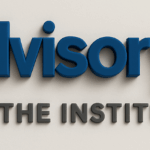To successfully transform into a Digital Enterprise, an organization must exhibit its readiness across Four Dimensions. Organizations will only be ready to transform themselves into true Digital Enterprises when they possess:
- Operational Sustainability – Your organization has a stable operational base
- Organizational Agility – Your organization can quickly adapt to change
- Strategic Agility – Your organization can anticipate change
- A “Disruptive” Culture – Your organization is receptive to implementing change
In the first two articles in this series, we discussed the foundational dimension of Operational Sustainability and the tactical dimension of Organizational Agility. In this article, we examine how to assess the third Dimension of Digital Enterprise Readiness, Strategic Agility.
Strategic Agility
Whereas Organizational Agility is about the organization’s ability to pivot when directed, Strategic Agility is the ability to anticipate when to pivot. Organizations must reduce their reliance on long-term strategic planning documents and instead create the capability within the organization to continuously monitor shifts in the market and emerging technologies. Then dynamically re-craft the organization’s strategic direction and vision to create competitive advantage and mitigate potential competitive disruption. The organization must develop a strategic set of capabilities that enables it to rapidly detect opportunities and threats, seize strategic opportunities and ensure continued competitiveness by adapting, improving, protecting and reconfiguring the organization’s business model and assets.
In Organizational Agility, an organization must be tactically able to adjust its structure and operating processes within the bounds of a chosen strategy. An organization must also be able to scan the environment through objective and formal assessment capabilities and rapidly test selected strategies to ensure they are sound. Facilitating strategic change emphasizing a joint effort by multiple stakeholders in a common connected digital space enables the organization to make agile evidence-based decisions using both internal and external assessment information.
Strategic Agility is the highest level of the Digital Enterprise Framework and represents a synergy of the other Dimensions of Operational Sustainability and Organizational Agility. Strategic Agility is heavily influenced by internal and external listening mechanisms and the ability to effectively and rapidly communicate Strategic Changes to both staff and customers. The seven attributes of this dimension, described below, focus on strategic agile capabilities. These capabilities depend on Operational Sustainability and leverage Organizational Agility described in Parts 1 and 2 of this series.
Strategic Planning Framework
The organization utilizes a flexible strategic planning framework which outlines a strategic vision, directional principles and intentional outcomes to enable rapid shifts in strategic plans when necessary.
A Strategic Planning Framework means the organization has a clear mission statement that outlines its reason for existence and provides a vision for what it is to deliver and distinguishes it from competitors. There is a clear linkage from the organization’s strategy to its implementation of strategy.
Strategic decisions are viewed as consequential and potentially disruptive so there are processes that address budgets and programs that implement strategic shifts. Programs and budgets are monitored to ensure expected value to realize since strategic decisions are consequential to the future of the organization.
A Strategic Planning Framework measures external opportunities and threats as well as internal strengths and weaknesses to generate and implement strategy. Finally, a Strategic Planning Framework maintains a process and mindset to scan the environment regularly rather than waiting for a triggering event. This establishes a uniform vision and purpose that is shared among all members of the organization and helps them pull in the same direction which results in improved quality of services for customers and a means of measuring the service.
Formalized Listening Capability
A Formalized Listening Capability means the organization employs a formal organizational process that continually monitors the market, competitors, and customers to rapidly identify market shifts outside of any formal strategic planning process. Formalized Listening Capability compliments the Strategic Planning Framework Attribute. Here the organization not only continually scans the environment, but also considers unfamiliar and even negative information to formulate Strategy.
Formalized Listening also requires the organization understand its “Strategic Type” (for example, does the organization specialize in a specific product or service and does it operate in many product areas?) so it can follow an orientation, culture, and structure to support that type.
Formalized listening also means gathering information from customers and competitors as well as examining regional and national trends to forecast their industry’s likely future. Formalized Listening allows the organization to not only predict, but also affect, competitive positions. A Formalized Listening Capability not only can help assess the intensity of competition, but it also helps with strategic thinking on how to better match a business’ strategy to the specific competitive character of the marketplace.
Deep Listening Empowerment
This attribute evaluates whether the organization has embedded the need to identify potential market shifts, competitive disruptions and changes in customer demands and needs at every level of the organization and established operational protocols to continually seek, collect and adjudicate these findings throughout the organization.
Deep Listening Empowerment allows the organization to fully exploit its opportunities gained from environmental scanning in the Formalized Listening attribute. This attribute provides evidence of an organizational culture that helps staff make sense of change and organizational decisions as well as appropriate behavior during times of disruption.
Deep Listening Empowerment is the result of robust research and development for suggesting and implementing technological strategy in addition to cross-functional capabilities and knowledge that enable the organization to implement new products, services, and strategy.
Finally, an organization practicing Deep Listening Empowerment uses strategic information systems to design and manage the flow of information to improve productivity and decision making. Competitive advantage in the digital economy is even more important than in the old economy and Deep Listening Empowerment helps an organization gain a competitive advantage through its contribution to the strategic goals of an organization and the ability to significantly increase performance and productivity.
Strategic Assessment Capability
Here the organization has established and maintains a formal internal capability by which to assess potential changes to the organization’s strategic direction based on identified market opportunities or competitive threats on an on-going basis.
A Strategic Assessment Capability builds on and uses the Strategic Planning Framework processes to continually monitor its strengths and weaknesses and scan the environment for opportunities and threats. With a Strategic Assessment Capability, the organization maintains and executes a defined business, corporate, and directional strategies – whether it be competitive (lower cost/differentiation) or cooperative (strategic alliance/value chain partnership) or growth/expansion, stability, or retrenchment. This allows the organization to have and maintain a product and services portfolio with the ability to constantly evaluate that portfolio based on environmental conditions and changing industry core competencies.
With a Strategic Assessment Capability, the organization can assess itself continuously, rather than when it’s too late, which will help an organization not only react to change to support Organizational Agility, but to be Strategically Agile to anticipate and drive change. A Strategic Assessment Capability yields an awareness of business issues, knowledge of how to improve efficiency and a clear vision of what direction an organization should be going.
Strategy Testing and Assurance
With Strategy Testing and Assurance, the organization has established mechanisms to rapidly test and measure potential changes to strategic direction and established clear mechanisms to rapidly assess results and shift strategy, as required.
Strategy Testing/Assurance requires the organization have established performance measures to evaluate decisions made through its Strategic Assessment Capabilities. For example, performance of policies, rules, or standard operating procedures are tracked and measured for how they are performed, and objectives, targets, or milestones are tracked and measured to determine if they achieved desired results.
The organization maintains benchmark data not only on itself, but its competitors. More importantly, the organization’s innovation and improvement activities are tracked and measured, and top management, senior leadership, and key decision makers’ job performances are evaluated by a Board of Directors or some independent oversight.
Finally, an Enterprise Resource Planning (ERP) system has been adopted that unites the organization’s major business activities within a single family of software modules. Strategy Testing/Assurance allows the organization to monitor whether its decisions have sufficiently streamlined strategic processes that result in the flexibility and customer service required for Strategic Agility.
Strategic Governance
Strategic Governance looks at whether the organization utilizes a governance process that is empowered to make organizational changes to strategic direction, outside of the normal strategic planning process, based on strategic assessment and testing, including the determination of executional requirements.
While Mission-Driven governance in the Organizational Agility Dimension focuses on the organization’s ability to properly govern decisions in reaction to change, Strategic Governance addresses the organization’s ability to proactivity anticipate change through its Strategic Assessment Capabilities.
Strategic Governance is characterized by a strategic board and reasonable oversight that help to find overlooked opportunities as a pipeline to Strategic Assessment. Furthermore, there is a strategic evaluation and influencing activity that examines management’s actions and provides additional input. Strategic decision makers recognize their larger responsibility including broader economic, legal, ethical, or voluntary obligations to society. Finally, there is a code of ethical behavior that drives the culture of the organization and guides organizational decisions.
Strategic Governance provides the organization with the capability to uncover strategy inconsistencies across the dynamic digital environment.
Strategic Shift Communication & Execution
Here the organization has established clear mechanisms to communicate changes in strategic direction, their organizational and operational impacts, and maintains the ability to effectively cause those changes to be executed and realized.
Strategic Shift Communication and Execution is characterized by evidence that Senior Leaders are able to communicate strategic vision and the rationale to staff through key elements necessary to accomplish that vision. The Communication & Coordination attribute in the Organizational Agility Dimension is foundational to the ability to perform Strategic Shift Communication.
More than just the ability to Communicate Strategic Shift, is the execution of it through Functional Areas working together to develop such things as action plans, programs, budgets, procedures, etc. for the implementation of strategy as well as proper training, especially where there is a differentiation strategy.
Executives are effectively matched to implement strategy based on skills and are able motivate Staff to properly use their skills and abilities to implement strategy. This ensures the growth of a “strategy-culture” where strategy is compatible with the culture, the culture can be modified to fit the strategy and management is willing to invest in changing the culture. Strategic Shift Communication & Execution allows the organization and its culture to focus on the right strategic and operating issues.
Strategic Agility is easily seen with the success of one famous traditional print newspaper. The Washington Post is following the strategy of its owner, Jeff Bezos, the founder and CEO of Amazon. The Post has hired both journalists and engineers, invested in new technology, and expanded into new markets. In the same way he built Amazon, Bezos has committed to a strategy of absorbing financial losses in the short term with an eye toward gaining market share over the long term. Their ability to be Strategically Agile resulted in the Post’s digital subscriptions growing 145%in one year. While the Post’s conversion into a primarily digital publication is the strategy, maintaining the core principle of commitment to first-class journalism is still the core business.
In the next article, we will examine the fourth Dimension of Digital Readiness, the Disruptive Culture.






Trackbacks/Pingbacks